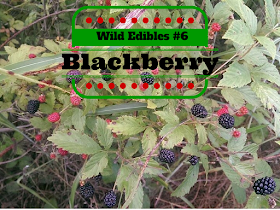This post may contain affiliate links. If you
purchase something using these links we will receive a small
commission, but it won't cost you any extra. This is a small way you can
help us continue to produce content. Thanks
It won't be long before the berry deliciousness of blackberries will be coming in. So many memories are wrapped around picking berries. There used to be a place not far from the house that was called the bone yard. A man who owned 1000's of acres and dairy farmed hauled all of his sick, dead, and dying cattle to the bone yard. For some reason that place produced the biggest and sweetest blackberries. It also produced some of the biggest rattlesnakes I have ever seen in person, as well as billions of chiggers. My dad was more susceptible to chiggers than I. There were times he would be covered with the little parasites.
Few things are better than blackberry jam or cobbler.
Blackberries are a biannual plant meaning they produce fruit in their second year. The wild varieties have thorns that will tear you up. Some are sour, some are sweat. Wild varieties can be improved by taking a minimum amount of care. I have also seen blackberries used as a hedge and it makes a very impressive one at that.
Many people know about the berries, but few know of the uses of the other parts of the plant. Hope you enjoy and learn something.
Depending on where you are, the blackberries could be ripening now or in the near future. Cobbler is without any doubt my favorite way to eat blackberries, well besides fresh if the berries are sweet. As an added bonus. I am going to share my recipe for blackberry/peach cobbler. The combination of these two fruits makes the cobbler even more special.
Ingredients:
- 1 1/2 cup self rising flour
- 1 1/2 cup sugar divided
- 1/4 cup milk
- 8 tablespoons butter melted
- 2 cups fresh peaches sliced
- 2 cups fresh blackberries washed and drained
- 1/2 teaspoon vanilla (optional)
- 1 tablespoon lemon juice (optional)
Preheat Oven to 375
Crust:
Combine flour, 3/4 cup sugar, milk, and butter. Mix well should be thick even on the crumbley side.
Filling:
in a saucepan put peaches and 3/4 cup of sugar over medium high heat. Once sugar has melted and peaches have begun to soften add blackberries cook for approximately 2 minutes more. Remove from heat add vanilla, lemon juice and stir.
Place fruit mixture in bottom of 9X9 glass baking dish, spoon crust mixture on top. Bake for approximately 30 minutes or until crust is golden brown. Note: Fruit mixture will probably show through in several spots.
Best with homemade vanilla ice cream.
Well there you have it. I hope you enjoyed this post. Many more to come. Consider subscribing to the YouTube channel and as always any shares and comments are appreciated. If you would like to support our efforts to teach some of the old ways and are planning on buying something on Amazon anyway, please use this link. We receive a small commission and it doesn't cost you any extra. Thanks a bunch.
Step by Step we are Bringing Rural Back




